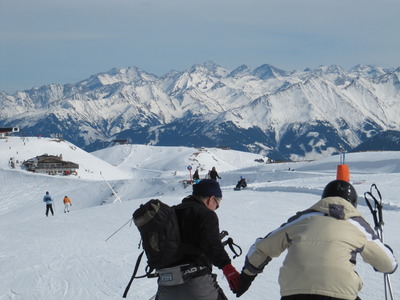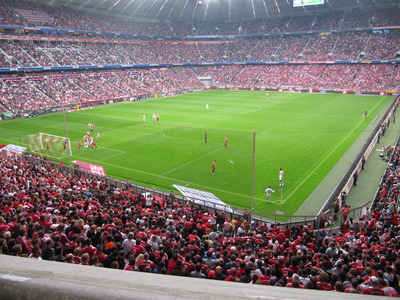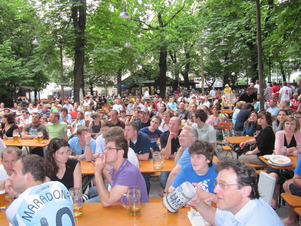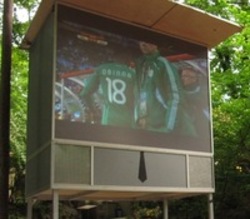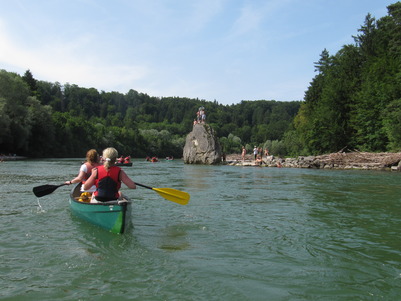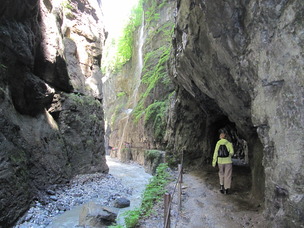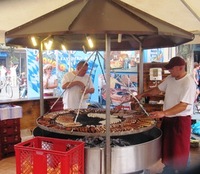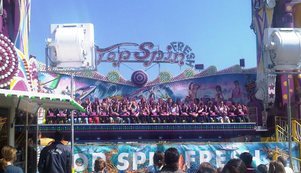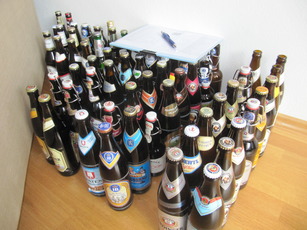Tanzania Holiday 3: Arusha National Park - afternoon canoeing
 Thursday, May 9, 2013 at 0:00
Thursday, May 9, 2013 at 0:00 We spent the morning in Tanzania's Arusha National Park driving through forest to the Momela Gate (saw baboons and their babies), then got a guided walk across the plains and brush (with a group of ~20 giraffes walking by).
After this, we climbed back in to the Land Cruiser and our guide drove northeast to the alkaline Momela Lakes.
 Source: tanzaniawildlifesafaris.com
Source: tanzaniawildlifesafaris.com
Alkaline lakes, also called soda lakes, have water with a pH typically between 9 and 12 (7 is pH-neutral).
This is due to carbonite salts in the soil that dissolve in the water. Few fish habitate them... but there is wildlife.
 Note: above photo was bracketed and HDR/tonemapped using Photomatix
Note: above photo was bracketed and HDR/tonemapped using Photomatix
Microorganisms can grow and thrive in the salty water - in fact, since each lake has a slightly different mineral content, they have different types of algae that grow in them (and have therefore a slightly different color).
Different waterbirds call the lakes home, but they are dominated by the lesser flamingo, that feed on the algae.
 Note: above photo was bracketed and HDR/tonemapped using Photomatix
Note: above photo was bracketed and HDR/tonemapped using Photomatix
As seen on the park map (above), there is a road going around/through the lakes. There are a number of viewpoints here and there along the way. Since it was the middle of the day, we stopped and took these stairs to a picnic area:

Here we ate lunch overlooking Small Momela Lake:
 Note: above photo was bracketed and HDR/tonemapped using Photomatix
Note: above photo was bracketed and HDR/tonemapped using Photomatix
After the midday pause, we drove to a dock on one of the smaller lakes (we need to ask which one - we forgot!)
and boarded a canoe. Two guides led the way, and an Italian couple had the third canoe in our little party.
We paddled along the shore a bit. About 50m into the water sat a small rock - we think these are reed cormorants.

The two cormorants took flight as we approached -- it was rather difficult taking photos from the rocking canoe!

Just beyond that rock were hippos. We came within about 60m of them, and the guides warned us not to get any closer. We were being eyed warily. The guides got a bit nervous when the hippos disappeared underwater.

One hippo started moving towards us, and the guides had us back away even further. Hippos move surprisingly well on land and in water, and get very aggressive when they feel their area is threatened. That would be bad.

As we backed away from the hippos, we turned our cameras upwards and scanned the hills above the lake.
At the top of one crest we saw some more giraffes, slowly walking and grazing their way through the thick brush.


After maybe 45 minutes in the canoe, we returned to shore and again got into the Land Cruiser for the drive home.
We continued slowly along the dirt road around/through the Momela Lakes, stopping for photos along the way.

In the next three photos, we start with a wide view, showing a rock outcropping in one of the smaller lakes...

...then zoom further to see the density of lesser flamingos along the shoreline...

... and finally zoom as far as we can (600mm equivalent in 35mm) to see the lesser flamingos feeding:

And here is a short video where you can see them dragging their beaks through the algae to feed:
We drove from the dirt road down to the shore of one of the lakes. Here we could walk right to the water's edge. There were many flamingos flying by, so we attempted to photograph "BIF" (birds in flight) as they passed.

The black beak is one of the characteristics that distinguishes the lesser flamingo from its larger cousin.

This was tough photography for us amateurs. Optical viewfinders on DSLRs are always "open", but electronic viewfinders on our Olympus E-M5 mirrorless cameras "black out" between shots - hard to keep the frame.
Our recommendation: practice panning with the birds at first; keep that panning speed when shooting blind.

Also, the "continuous" or "tracking" autofocus with mirrorless cameras like the E-M5 is based on contrast detection, rather than phase detection on DSLRs. This is simply not as fast, and slows frame rates considerably. Not worth it.
Our recommendation: use single autofocus (locks focus once and holds it). Reduce the aperture as needed to get a larger depth of field (deeper focus area) so that shots stay in focus as you pan and shoot (at least for a while...).

FYI: we were using the Panasonic 100mm-300mm lens with the E-M5 and the Panasonic G5 cameras.

As the dirt road around the lakes descended again into the forested area, we found female waterbucks:


A bushbuck at the edge of the road, just outside the trees, paused enough so we got a photo of her too:


Further on we spotted a male waterbuck, walking along a hillside.

He crossed the road maybe 30m in front of the car.

He continued on for a minute before disappearing into the brush.


We caught a glimpse of another blue monkey in the trees, and stopped for a photo.

At least this one finds his own food, as opposed to the scavengers near the Momela Gate parking lot.

If you look on the map of the park, you will see Rhino Crest in the southeast, beneath Ngurdoto Crater.
Here we got out of the car again, and walked towards the lookout point above the crater.
The highlight was not the view, but the black and white colobus monkeys in the trees along the path.

They appeared to be relaxing, socializing, and grooming.

It was challenging to get a good look through the thick trees, but managed a few good shots.
We also switched to video and have a short clip of one b&w colobus monkey grooming another:
We continued observing the monkeys until the moved back further into the trees and out of sight.

This was a great start to the honeymoon safari. We saw a lot of the park in one full day, including canoeing!
We returned to Karama Lodge near Arusha this evening... on to Lake Manyara National Park tomorrow!
And finally... this was our honeymoon. For the wedding, instead of registering for physical gifts (e.g., china, silverware, etc.), we registered different parts of this Tanzanian safari. For this blog post, we wish to heartfully thank:
- Seery M, for the canoeing on the lake. It was a really unique way to see the animals. THANK YOU!
- Mrs J (Herr J's mom), also for the canoeing. You can stop worrying - the hippos didn't get us. THANK YOU!
- Aunt Annie and Uncle Jack, for the overnights at Karama Lodge. The views were lovely. THANK YOU!
We hope our friends and family enjoy the pictures and story as much as we did living it.
 Herr J ...
Herr J ...  Post a Comment
Post a Comment  Travel tagged
Travel tagged  Arusha National Park,
Arusha National Park,  Tanzania,
Tanzania,  black and white colobus,
black and white colobus,  blue monkey,
blue monkey,  canoeing,
canoeing,  flamingo,
flamingo,  hippo,
hippo,  waterbuck
waterbuck  1 Reference ...
1 Reference ...  Print Article
Print Article  Email Article
Email Article 



